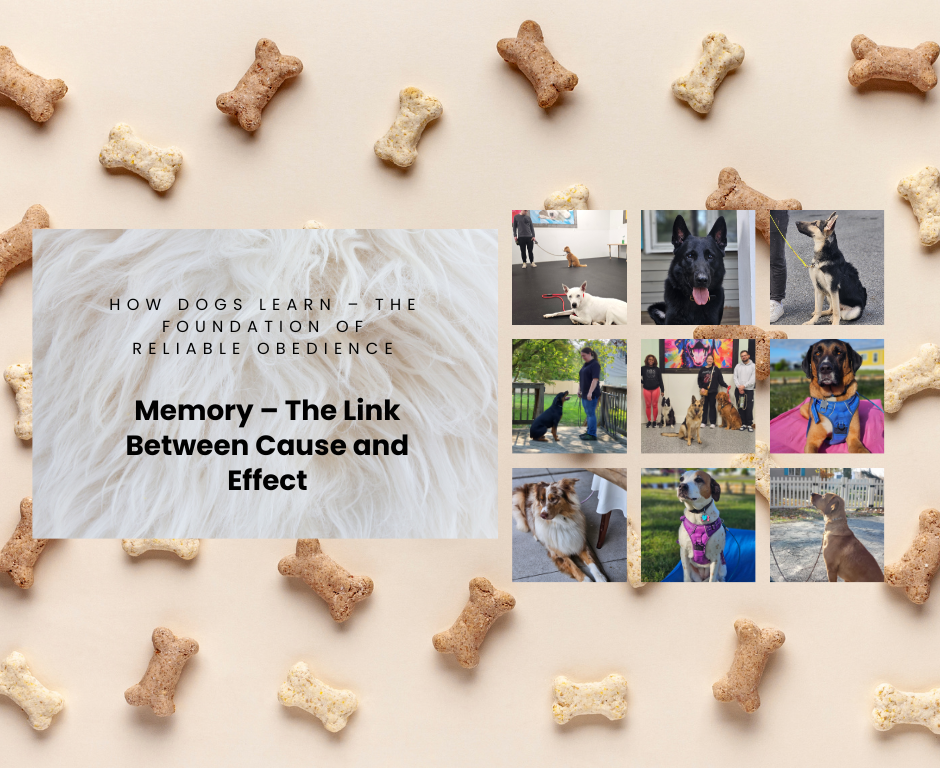Blog Series: How Dogs Learn - The Foundation of Reliable Obedience - Part 2
April 16, 2025

Dogs don’t remember things the way humans do. They don’t reflect on events emotionally or abstractly. Instead, they associate outcomes with actions. If pulling on the leash leads to discomfort or being ignored leads to no reward, that information gets stored. If sitting calmly leads to praise or fun, that memory sticks, too.
The more consistent the outcome, the stronger the memory becomes.
Every interaction you have with your dog is shaping their memory bank. When responses to behavior are inconsistent (sometimes corrected, sometimes ignored, sometimes reinforced) you create confusion. But when outcomes are predictable, your dog learns what always happens when they make a certain choice.
This is why consistency isn’t just a suggestion, it’s a requirement. It’s how your dog starts forming expectations and adjusting their behavior accordingly.
Memories aren’t formed in a single moment. It’s the repetition of action and outcome that locks in a behavior. One successful recall may not mean your dog will come every time but, ten consistent recalls, where returning always leads to something positive (or prevents something negative), builds a strong, reliable memory.
Repetition + predictability = reliability.
There’s an important difference between a dog doing something because you told them to and a dog doing something because they remember it works out better. The latter is more reliable. That’s where memory shines. When you allow a dog to experience the natural result of their own choices, you don’t just get compliance, you get understanding.
Training built on memory becomes self-reinforcing. The dog doesn’t need to rely on you to micromanage them. Their own experiences become their guide. That’s how you get behaviors that hold up in real-life situationsbecause the memory of the consequence is stronger than the distraction in front of them.
Memory is what gives action its value. It’s how your dog connects the dots between “what I did” and “what happened because of it.”